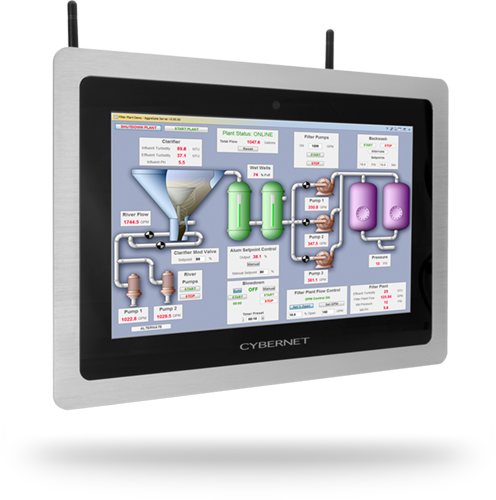The aerospace industry has seen massive growth post-pandemic. Last year's sales in both the U.S. aerospace industry and the defense department totaled over $328 billion in orders for commercial aircraft, while the military spent $228 billion. That's a near 5.5 percent increase over 2023. Major manufacturers, including Airbus, Boeing, and rising player GE Aviation, are introducing increasingly more technological solutions, such as automation in aerospace, to meet demand despite inherent challenges.
Automation in Aerospace: The Challenge
Automation refers to the use of technology to assist human workers or even replace them. Its application in factory automation, for example, has enabled companies to produce thousands, millions, and even billions of products daily.
The aerospace industry has been conservative in its approach to automation. You'll not find the numerous automated assembly lines and massive robots like in most factories. Instead, you'll discover that much of the automation in aerospace is tools assisting the numerous flesh-and-blood workers. Two significant reasons are usually cited as to why.
First, aircraft are not only technologically complex but are also enormous in comparison to other manufactured products (the aforementioned sodas and cars). Components like the doors and wheels of even "small" commercial aircraft are too bulky and unwieldy to be built in assembly-line fashion.
So, when automation is used in airplane construction, human workers and robots can be found working together on a given part. Alternatively, they may need to travel to another part of the massive warehouse to reach the area that requires attention. This is all in sharp contrast to most automated systems, where a piece is delivered to the robot via the assembly line.
The second, and arguably the main reason, is that production volume numbers in the aerospace industry are significantly lower than in other sectors. For example, the most produced plane in the world is the Cessna 172 Skyhawk. At least 44k have been made since it was first introduced back in 1955. Then there’s the Boeing 737, which took its first flight in 1967. Nearly 11k have been built and flown since then. These figures are too low for aircraft builders to invest in the high costs of most automated machinery. However, recent technological advancements in automation and their accompanying benefits are catching the eye of many industrial heads as backlogs for aircraft continue to grow.
Current Automation in the Aerospace Industry
Given the above unique limitations, many aircraft manufacturers confine themselves to automation that assists their workers. Most are found in the following common tasks.
Drilling and Fastening
Industrial robots and similar machines can be set to perform the same tasks with consistent and speedy results. One task common in aerospace is the drilling of holes into a fuselage.
So robots are used to drill those holes. They're not only more precise and consistent, but they can drill a hole in a single step. On the other hand, a human worker might have to take four steps to drill the same hole with the same precision. Skipping such extra steps helps further reduce costs.
The application of numerous fasteners along the fuselage receives similar benefits from automation in the aerospace industry. In all these cases, workers are freed to handle tasks requiring human adaptability, flexibility, and ingenuity.
Moving Parts
As previously mentioned, many airplane parts are enormous in size. Now imagine moving just a section of the fuselage or wing of the massive Boeing 777X. At 251 feet, the body of this passenger plane alone is longer than the wingspan of its famous predecessor, the 747.
Robotic arms, under the expert control of a human supervisor and their rugged industrial tablet, can move the parts of this or any other plane to their proper places during assembly. They can do so 24/7 if necessary without risk of injury, like if done manually by workers.
Painting and Sealing
Painting, like drilling, is another common task for which robots are used in aerospace. They can apply and spray the often toxic coatings and paints evenly and to exact specifications—a vital qualification. Robotic systems applying sealant have been clocked to be 20 percent faster than manual methods, a crucial statistic in an industry where delays can be costly.
There are other benefits. Robotic painters don't require scaffolds to access the aircraft's top and other hard-to-reach areas. Robots with the right flexibility and reach can be brought in and programmed to do so virtually unsupervised. Their use also protects workers from this hazardous task. This also saves on costs (i.e., injuries, sick time, medical leave, etc.)
AI and Automation in Aerospace
The aerospace industry continues to look for ways to automate despite the limitations of size and (lack of) economies of scale.
One exciting area is the increased use of artificial intelligence. Running on AI computers, these sophisticated programs mimic human thinking, making decisions, solving problems, and learning from experience, among other capabilities. In aerospace, they can be used to:
Automation Control
Control the robots used for automation in the aerospace industry. The drilling and painting robots above would learn their particular tasks without having to be pre-programmed for each aircraft piece (i.e., wing, fuselage, etc.)
Predictive Maintenace
Forecast when the machinery needs maintenance before it actually breaks down. This is through predictive maintenance, in which the AI reviews data on the machinery involved, looking for trends like part failure and electrical shorts. Workers then make the proper repairs and replacements before they actually occur.
Smart Factory
Finally, AI would be running virtually all the automation in the aircraft assembly area. This is a smart factory, where Industry 4.0 technologies, such as the Internet of Things (IoT), handle most tasks with minimal to no human supervision. Advantages would range from increased human safety to operations 24/7.
Automation in Aerospace Made Easy Thanks to Cybernet
Bringing automation to the aerospace industry requires considerable effort. The massive proportions of the crafts and the sales of so few of them make aircraft manufacturers reluctant to invest in the sometimes high price of automated machinery. The advantages of automating many tasks (e.g., drilling, part movement) common to the industry are increasingly outweighing the costs, as well as risks such as worker safety.
Contact Cybernet Manufacturing if your aerospace firm is interested in learning more about automation in aircraft manufacturing and how our industrial computers and tablets work well with such systems.


